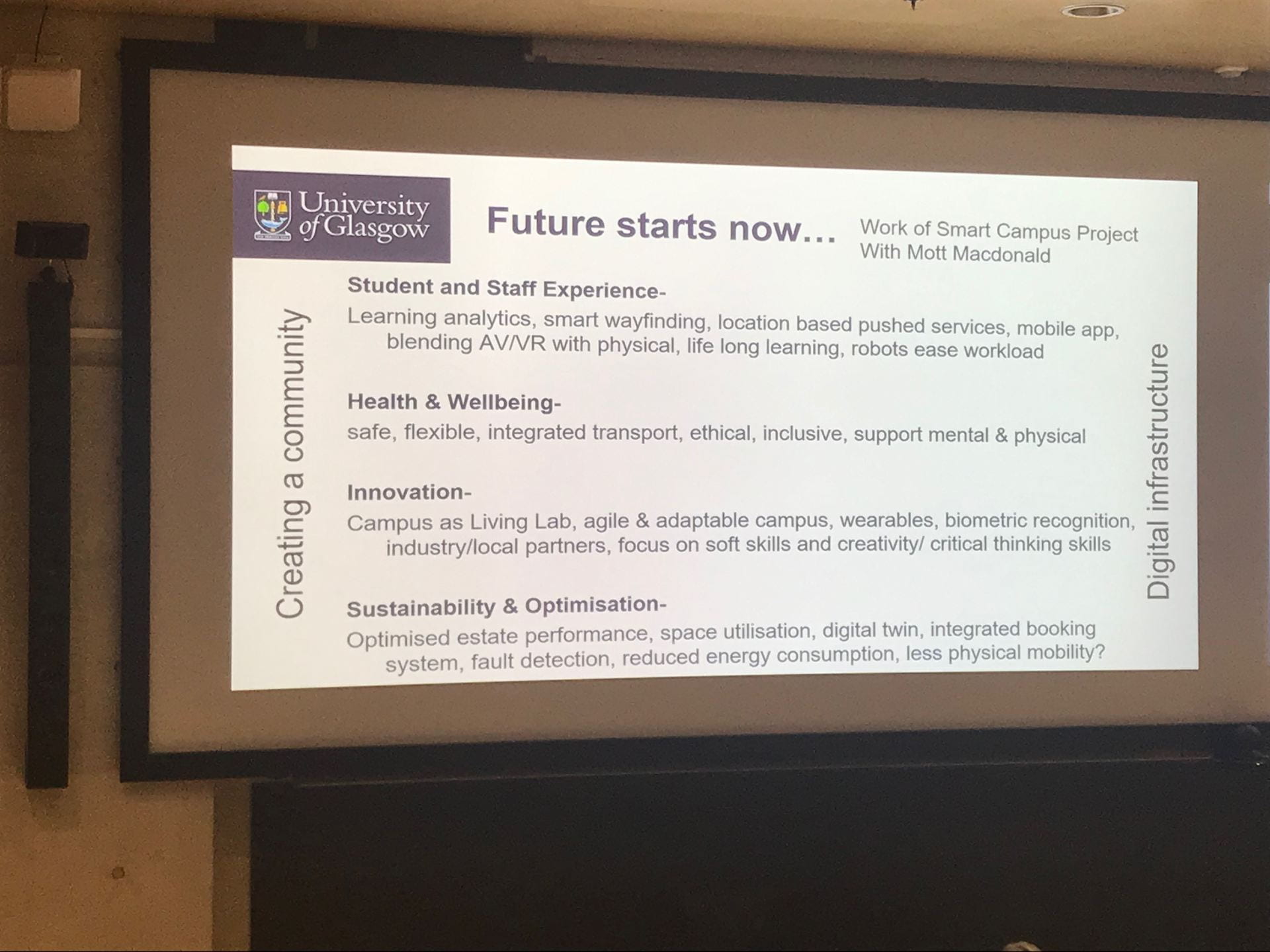“Bricks will be replaced by clicks” they said in the early 2000s, suggesting a move away from physical campuses in favour of more virtual spaces, with campus managers becoming IT managers. Fast forward 19 years and Professor Alexandra den Heijer from TU Delft opens the EUNIS19 congress (view slides) confirming that campuses are still here and very much wanted by students. For students, the campus is a place to study away from the distractions at home, a place to socialise and perhaps even find love.
Why do students come to campus? To find a quiet place to study away from distractions at home and to meet people (love and friendship). #EUNIS19 pic.twitter.com/SKPaqn23G6
— Dr Julie Voce (@julievoce) June 5, 2019
She introduced a campus model based on the analogy of states of matter applying it to lectures, workplaces and meetings:
- Solid = Traditional campus with individual workspaces, face to face meetings without technology, sense of community, but risk of silos. Campus is expensive to run.
- Liquid = Network campus enables breaking down of silos, technology-enabled meetings and lectures, encounters/engagement as a result of serendipity, people are more visible but greater anonymity and less privacy.
- Gas = Virtual campus means highly flexible but work/life balance can be harder to manage, paperless but lonely, low course completion rates.
The challenge is to find the right combination of traditional, network and virtual to ensure the heritage of the older buildings whilst still adapting.
Three models for the campus from @alexandra_dh: Traditional – individual workspaces, community but expensive. Network – breaking down silos, serendipity, more visible, but anonymity. Virtual – flexible, work/life balance, paperless but lonely & low completion rates #EUNIS19 pic.twitter.com/zGaGcXFbjE
— Dr Julie Voce (@julievoce) June 5, 2019
@alexandra_dh applies the ‘solid, liquid, gas’ analogy to lectures, workspace and meetings #EUNIS19 pic.twitter.com/EmcwE64QzZ
— Dr Julie Voce (@julievoce) June 5, 2019
Professor den Heijer noted that some of the biggest frustrations amongst campus managers is that spaces are expensive and whilst they often seem to be claimed they are actually underused. So how can we better manage these spaces? At City, we have been exploring the concept of Intelligent Campus to use big data to help with this challenge. The team at TU Delft have produced two books which look at Smart Campus tools in use, with examples such as the Cambridge Spacefinder to enable users to find suitable study places. The aim is to enable space utilisation to be determined based on actual use, in real-time rather than schedules and passing utilisation information directly to users who can then determine where they want to work or study.
Main concern of campus managers is that space is reserved but not used and provides misleading information that space is at capacity. Tools for monitoring real-time use could help here. #intelligentcampus #EUNIS19 pic.twitter.com/4oFtRH115A
— Dr Julie Voce (@julievoce) June 5, 2019
Continuing the theme of ‘Campus for the future’, Eleanor Magennis transported us eleven years into the future to imagine the University of Glasgow in 2030 based on their Smart Campus Project.

We followed a day in the life of on-campus student Ian who was based in Glasgow. Cars had been banned from the City Centre and the University so he travelled on an electric scooter to the campus. Once there he printed a healthy snack from the vending machine and was directed to his first workshop. Using his Google glasses he was able to download his own backdrop for the space; lighting and windows adjusted themselves automatically. Hologram lecturers ran the sessions assisted by robot assistants. Virtual reality and augmented reality rooms are commonplace. Outside of the class, there were ‘no technology’ chill-out spaces with views of the old buildings and the park. One of Ian’s friends from the Singapore campus joins him by hologram for a stroll in the park. As part of breaking down the barriers between the university and the community, evening performances take place in the communal spaces projected onto the side of the building.
“The future starts now” says Eleanor and she presented the areas that are already being worked on, such as learning analytics, smart wayfinding, integrated transport, agile and adaptable campus, space utilisation and reduced energy consumption.

Are we ready for this future?

Very interesting report Julie